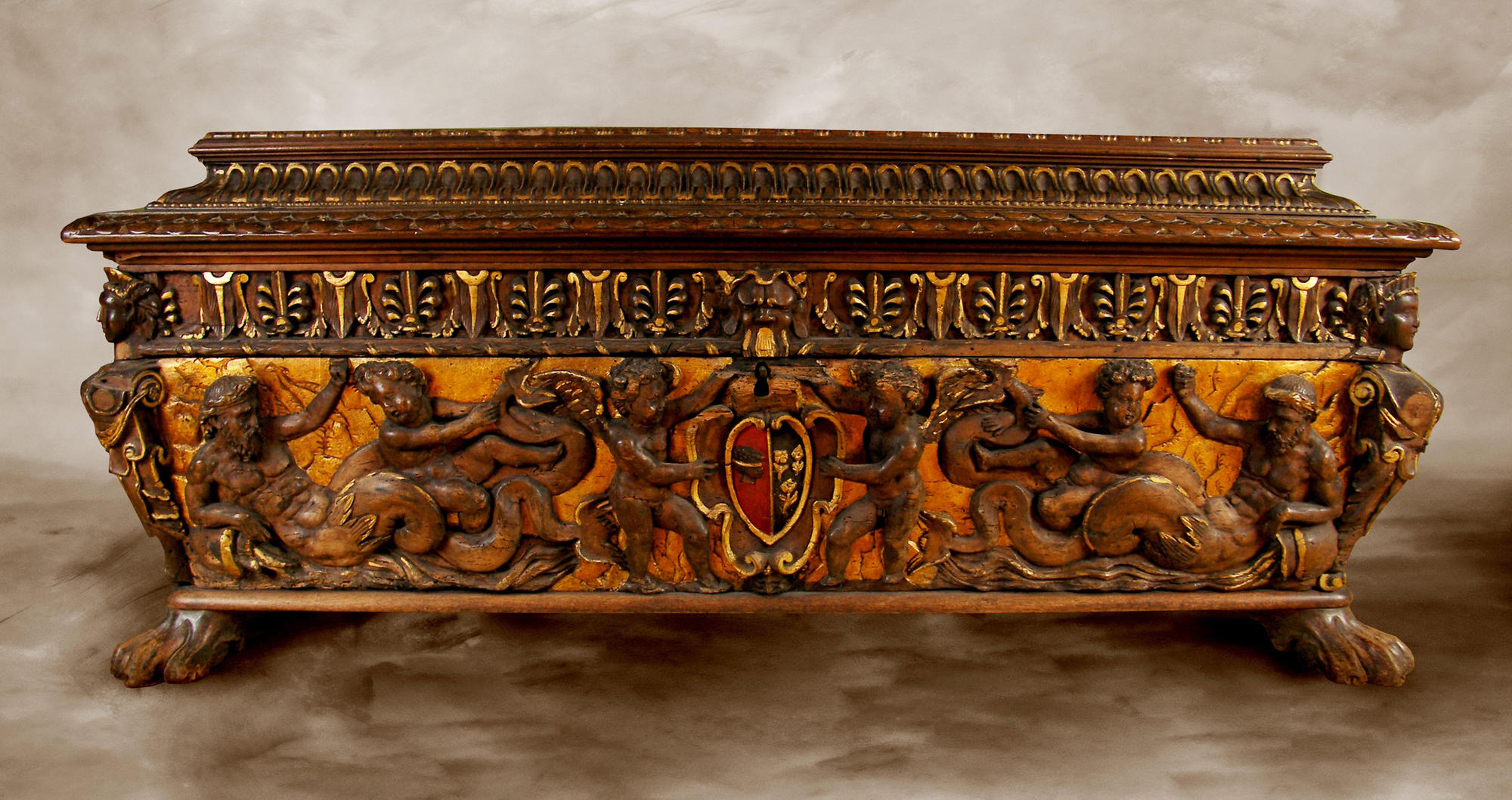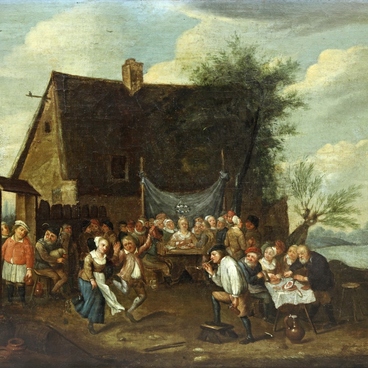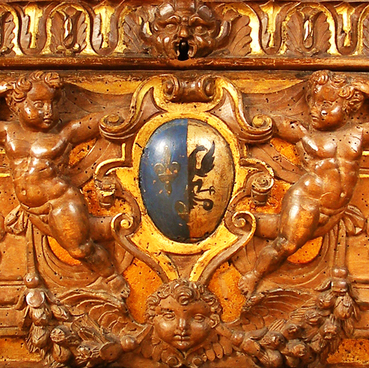This chest was created by an unknown author at the end of the 16th century. It was made from walnut wood and decorated with carvings with tritons and putti. Tritons are sea creatures from ancient myths. They accompanied Poseidon and Amphitrite. Putti are little boys with wings that looked like ancient Greek Eros and Christian angels.
The chest was part of the dowry of a rich bride, so in the middle the master combined two family emblems into one. All figures seem to move from the sides to this symbol. The tritons lean on urns with flowing water, their hands and tails repeat the movement of the stream. The putti are also turned to the centre. The artist placed the mythical characters against a gilded background, which emphasised their volume.
Such abundant decorations on chests appeared in Italy in the 15th century. At first, the cassone was decorated with stucco — artificial marble — or upholstered in velvet and embroidered fabrics. Then volumetric compositions came into fashion. Renaissance masters were largely guided by ancient Roman marble reliefs, but interpreted their subjects in their own way.
The art critic Lyubov Faenson singled out three main cities where cassone masters worked: Venice, Rome and Florence. Two chests from the collection of the Yaroslavl Museum of Fine Arts are made in Florence. Also, both of them are of the same type. It was developed by Bernardo Buontalenti, a follower of Michelangelo Buonarroti and a student of Giorgio Vasari. The artist was a famous architect and engineer, he created the villa Pratolino and the façade of the Florentine church of the Holy Trinity. On a sketch, the master drew a chest with lion paws and female figures on the corners. Now the sketch is kept in the Uffizi Gallery.
In Russia there are only five cassoni created according to Buontalenti’s sketches. Three of them are in the Hermitage, two in the Yaroslavl Museum of Fine Arts.
The chest was part of the dowry of a rich bride, so in the middle the master combined two family emblems into one. All figures seem to move from the sides to this symbol. The tritons lean on urns with flowing water, their hands and tails repeat the movement of the stream. The putti are also turned to the centre. The artist placed the mythical characters against a gilded background, which emphasised their volume.
Such abundant decorations on chests appeared in Italy in the 15th century. At first, the cassone was decorated with stucco — artificial marble — or upholstered in velvet and embroidered fabrics. Then volumetric compositions came into fashion. Renaissance masters were largely guided by ancient Roman marble reliefs, but interpreted their subjects in their own way.
The art critic Lyubov Faenson singled out three main cities where cassone masters worked: Venice, Rome and Florence. Two chests from the collection of the Yaroslavl Museum of Fine Arts are made in Florence. Also, both of them are of the same type. It was developed by Bernardo Buontalenti, a follower of Michelangelo Buonarroti and a student of Giorgio Vasari. The artist was a famous architect and engineer, he created the villa Pratolino and the façade of the Florentine church of the Holy Trinity. On a sketch, the master drew a chest with lion paws and female figures on the corners. Now the sketch is kept in the Uffizi Gallery.
In Russia there are only five cassoni created according to Buontalenti’s sketches. Three of them are in the Hermitage, two in the Yaroslavl Museum of Fine Arts.
Previously, this chest was in the collection of Count Vasily Kochubey. The nobleman was Actual State Councillor and Master of Ceremonies of the court of Emperor Nicholas II. Kochubey inherited from his father a collection of paintings, graphics, furniture, minerals and a unique library. The collection adorned his mansion in Tsarskoye Selo.Previously, this chest was in the collection of Count Vasily Kochubey. The nobleman was Actual State Councillor and Master of Ceremonies of the court of Emperor Nicholas II. Kochubey inherited from his father a collection of paintings, graphics, furniture, minerals and a unique library. The collection adorned his mansion in Tsarskoye Selo.




